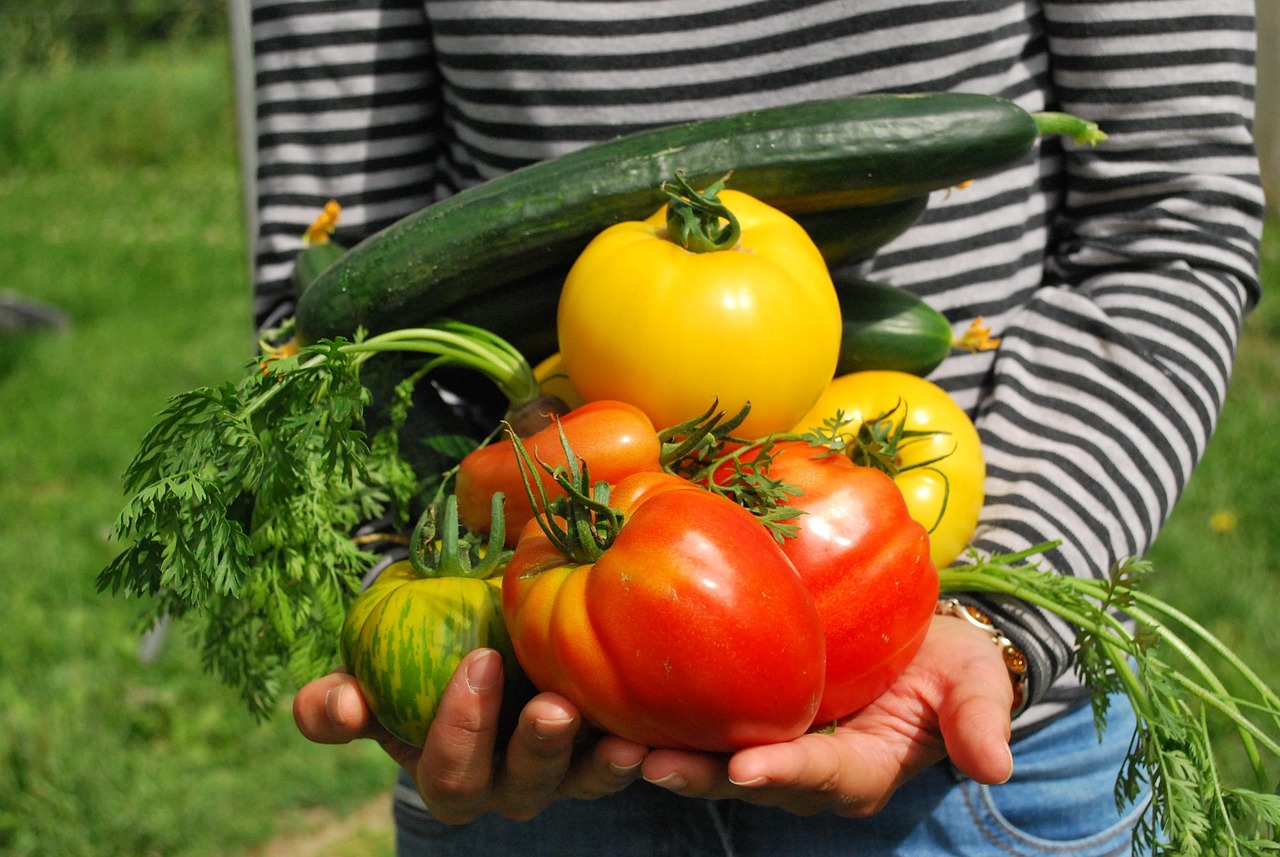
Eat What You Grow: An Edible Garden for Every Space
Growing your own food is a rewarding, sustainable and cost-effective choice that allows you to enjoy fresh, homegrown produce, while reducing dependence on grocery stores. By cultivating herbs, fruits and vegetables, you can benefit your health and help the environment at the same time. Even as a beginner, or as someone with limited space, an easy-to-maintain edible garden and the right growing strategies can yield bountiful crops for you to enjoy.
Choosing the Right Plants for Your Space
No matter where you live, you can select edible plants that will thrive in your available space and conditions. Whether you have a backyard, a balcony or just a sunny windowsill, selecting the right plants for your environment ensures a productive garden.
Backyard Garden Beds
For those with enough outdoor space, backyard garden beds are the perfect way to start a vegetable garden. You can enrich the soil and plant directly in the ground, or construct raised beds, to improve soil quality and drainage. Any of these edible plants will thrive outdoors with good soil and light:
- Tomatoes;
- Bell peppers or hot peppers;
- Carrots;
- Lettuce or kale;
- Strawberries;
- Shrub-forming herbs like thyme, rosemary, lavender and oregano.
Balcony Containers
Even with limited outdoor space, a balcony or patio can support a healthy garden with container plants designed to fit compactly. Here are some examples to try:
- Cherry tomatoes;
- Various kinds of peppers;
- Spinach, kale or broccoli;
- Leafy herbs like mint, basil and chives;
- Dwarf fruit trees like lemon or fig.
Indoor Pots
Certain plants don’t even need outdoor space; just a bright spot by a window will do. Given proper lighting and care, these smaller plants can produce very well indoors:
- Compact pot herbs like basil, parsley and cilantro;
- Microgreens and sprouts;
- Green onions;
- Aloe vera (for both culinary and medicinal use);
- Small chili pepper plants.
Building an Edible Garden in Any Living Space
Even if you have minimal space, you can still use creative solutions to grow a thriving edible garden. Living in a smaller home, an apartment, or even in an RV, is no reason not to grow some of your own food. The trick is to build non-traditional garden structures to optimize the use of resources. Furthermore, make sure to use PFAS water testing to ensure your water is clean and chemical-free. High-quality water, high-quality plants.
Creative Gardening Systems
For tight indoor spaces, you can build a vertical garden with wall-mounted planters or hanging pockets beneath bright plant lights. These are good for growing fresh herbs and leafy greens. Hydroponic systems, which use enriched water instead of soil, can fit on countertops or small shelves, making them ideal for lettuce, basil and other compact edible plants. Then there are portable setups, such as fabric grow bags, that can be easily moved to optimize for sunlight or accommodate travel.
A small outdoor space can also offer a surprising amount of possibilities. Raised beds, commonly used in urban settings, help maximize yield while improving soil drainage and structure. This makes them perfect for root vegetables and sprawling plants, like squash or cucumbers. Additionally, compact pots, stackable planters and hanging baskets can add even more growing space to a small backyard or patio.
Clever Storage Solutions
Gardening tools, like shovels, pruners and watering cans, also take up space, so you’ll need to think about efficiently organizing your garden supplies as well. Here are some strategies for maximizing storage when space is limited:
- Wall-mounted hooks or pegboards: Ideal for neatly holding gardening tools, ensuring they are easily accessible and off the ground.
- Foldable shelves: Allow for multi-tiered planting without taking up valuable floor space, making them perfect for small apartments or balconies.
- Stackable bins or rolling carts: Provide easy access to potting soil, fertilizers and other supplies, while keeping clutter to a minimum.
- Hanging storage pockets: Useful for keeping seed packets, gloves and small hand tools organized and within reach.
With these kinds of space-saving strategies, even the smallest of homes can support a flourishing edible garden, while staying neat and functional.
Growing Edible vegetables and herbs Year Round
By incorporating a mix of perennial and seasonal plants, you can create a garden that produces healthy food year-round. Perennials, such as asparagus, rhubarb and berry bushes, continue to yield crops for multiple seasons, reducing the need for replanting. Seasonal vegetables, like tomatoes in the summer and kale in the cooler months, allow for crop rotation and continuous harvests. During the cold months, options like greenhouse gardening, indoor hydroponics and hardy winter vegetables, like carrots, Brussels sprouts and garlic, help maintain fresh homegrown produce throughout the year.
Bringing Plants Indoors for Wellness
Indoor edible gardens provide more than just fresh ingredients; they also enhance overall well-being. By incorporating a mix of edible plants and air-purifying plants indoors, you can cultivate a healthier and more soothing home environment.
Maintaining a small herb garden in your kitchen will both beautify the space and provide healthy flavoring options close at hand. Aromatic plants, like basil, cilantro and rosemary, can thrive in small pots by a window. Microgreens, such as arugula and radish sprouts, grow quickly in shallow trays and provide a nutrient-dense boost to meals.
Other houseplants, though not edible, can improve indoor air quality by removing toxins and increasing oxygen levels. Snake plants, peace lilies and pothos are all easy to grow and don’t need very bright light, making them great choices for bedrooms and living areas. Aloe vera serves as both an attractive houseplant and a natural remedy for skin irritations, while lavender provides a calming aroma to help promote relaxation.
In bathrooms, placing bromeliads or orchids can add vibrant color. These plants also tend to thrive well in more humid conditions. With a thoughtful approach to plant choice and placement, you can enhance every room in your home with natural, healthy greenery.
The Broader Benefits of Homegrown Edible Gardens
Beyond personal benefits, home gardens contribute to global sustainability and food security. By growing your own food, you conserve resources by harvesting only what you need and eliminating the potential waste from packaging and transport to a grocery store. You can even save some money on grocery bills in the process.
Furthermore, small-scale gardening initiatives can help address urban food insecurity by increasing the amount of healthy produce available in the community. There is an immense satisfaction in using homegrown ingredients daily, knowing exactly where your food comes from and not relying entirely on a distant supply chain for your meals.
Conclusion
No matter where you live, or how much space you have, growing a simple edible garden is within reach. Even a small effort, such as keeping a few herb pots on your windowsill, can provide fresh flavors and meaningful health benefits. By taking mindful, sustainable steps toward home gardening, you create a greener living space while reducing environmental impact. A thriving, homegrown garden starts with simple choices — and every edible plant you grow brings you one step closer to a more self-sufficient and sustainable lifestyle.



Post a comment